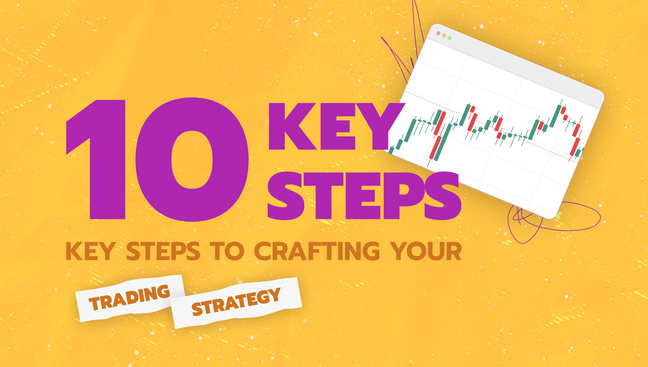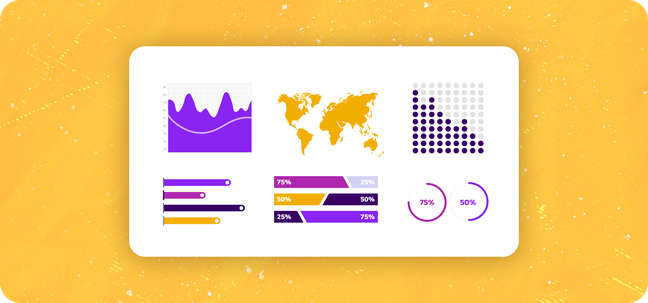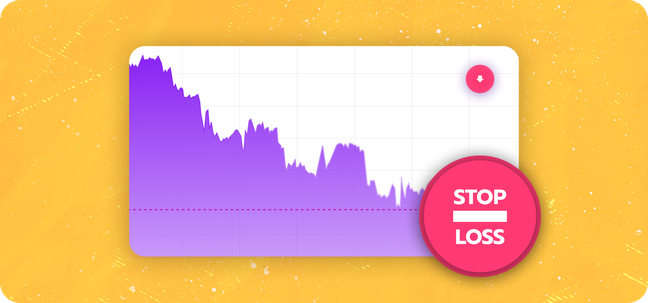10 Key Steps to Crafting Your Trading Strategy
The world of trading can be both exciting and overwhelming. With so many different markets to choose from, creating a trading strategy that would fit a chosen one is a must. The path of a successful investor relies on several crucial factors. They involve the ability to clarify market perspectives along with financial instruments to gauge trading trends.

Developing a trading strategy calls for commitment and hard work. What’s more, even when the trading plan is ready to go, most beginners find it pretty hard to follow it. In this article, we will provide 10 essential steps to crafting a winning approach instead of being fooled by “success stories of getting rich fast”.
So, here we go!
Step 1: Shape Your Market Perspective
A trading strategy starts with defining your key market perspectives. Which type of trading do you prefer? Is it going to be scalping and day-trading or long-term investment? The choice will let you define the most suitable asset or market that matches your trading requirements.

It is a question of trading personality as well. Are you eager to handle multiple positions in the short-term perspective as a proactive trader? Do you prefer less intensive market activities?
Some traders are mathematically minded and keen on looking at charts. Others rely more on fundamental analysis and macroeconomic factors. The idea is to define market perspectives that would make you “feel right”.
Step 2: Select a Market to Navigate
Market selection is another vital decision beginners would have to make. It will define the asset your future trading strategy will be based on. If you do not want to expose a single asset, it is possible to work out a plan across various financial markets or asset types.
Diversification can be a good idea. However, one should avoid an over-diversified portfolio, especially right from the start. A good idea is to select several assets of the same class (for instance, different currency pairs or metals in commodity space).
Beginners must be prepared to explore different markets before finding one. Most of you will have to go through trial and error as well as backtesting to make sure a selected approach fits you the most.
Step 3: Determine Your Ideal Trading Duration
The next step is to decide on the trading hours. It depends on whether you plan to become a full-time trader or spend just a few hours to make some extra cash. Whatever you choose, it is vital to consider official trading hours that refer to specific markets.
The best idea is to start with FX trading, as it is available round-the-clock without limitations or the need to follow specific schedules. Experts recommend beginners to avoid spending too much time exploring the charts right from the start. Otherwise, the process can seem daunting and overwhelming. Try to get involved in the financial market gradually.
Step 4: Opt for an Instrument to Gauge the Trend (Or Its Absence)
Now, it is time we defined the toolkit to gauge the trend. If you manage to spot the trend, you will understand how the market or price moves. Market participants can choose from a variety of instruments depending on the market perspectives, asset type, and other crucial factors.
Some may appreciate technical analysis that mainly relies on charts. You will have to work with a range of patterns used for specific purposes. The good news here is that most common charts are already integrated into the MT4 platform, which you will probably use as the main software.
It also means you will have to learn how to identify, read, and trade different patterns. That may take some time. The approach works mainly for day traders and specific asset classes in case you plan to open multiple positions in a short-term perspective.
The second path involves fundamental analysis. It relies on different macroeconomic factors one will have to explore. They help to understand the potential strength of specific market sectors or companies when trading stocks, for example.
Step 5: Pinpoint Your Entry Signal
When you decide on the market and the way you plan to trade on it, you will need to consider specific signals. They let you identify the best market entry and exit points. In simpler words, you will know when it is the best time to open or close an underlying position.
As for the entry signals, traders generally identify spots taking into account several crucial factors:
- Potential time delays (whether you need extra time to confirm the signal);
- The type of a preferred signal (indicating the price move or the market breaking through a certain level).
These factors matter if you plan to buy or sell assets immediately.
Step 6: Strategize Your Departure Signal
At this stage, traders generally start utilizing some of the risk-management approaches. Placing a stop loss can be a critical step to ensure a safe market departure. It is also a kind of money management instrument that is used to prevent investors from losses.

The main idea is not just to place it where you do not want to lose cash but to use a specific point where you think the market can change. In simpler words, the instrument lets you automatically exit the market in the area where you no longer want to hold the underlying position.
Similarly, a take-profit signal lets one exit the position without losing cash in case of sudden market movements. Both come as an essential part of a healthy and efficient trading strategy.
Step 7: Clarify Your Risk Parameters
Risk management is vital to avoid huge losses. It helps to identify crucial risk parameters, as losing capital on an open position can lead to disastrous consequences. The idea is to calculate risks before entering a specific position.
The rule of thumb here is to trade not more than 5% of your capital per trade. Some experts use even less (1% of the initial balance). Whatever amount you choose, do not ignore calculating the Reward to Risk Ratio along with the Hit Rate over a specific period. This would improve your risk-management approach.
Step 8: Document Your Trading Guidelines
Data is the key to success, especially for traders who always try to analyze the market. Having all your trading guidelines documented makes it possible to build a successful trading strategy. One can always look back at the orders’ history, learn from both mistakes and successful trades, develop proper decision-making as well and configure the techniques following specific market conditions.
Keeping a trading journal helps you stay tuned to the market and modify the trading strategy accordingly.
Step 9: Test and Validate Your Trading Approach
When the plan is set, you might want to test your strategy under real market conditions. On the other hand, one would hardly appreciate losing money, if something goes wrong. Modern technologies offer various types of testing the approach without investing real cash.

First of all, beginners can opt for demo accounts that actually replicate real market conditions with the same tools and assets available for virtual trading. The second option involves paper trading which works almost the same way. A user applies a chosen strategy using virtual money instead of real cash. What’s more, the MT4 trading platform comes with an integrated backtesting feature. You can run a strategy in a test mode based on the trading history generated by the software.
Bonuses can also help you validate a selected trading approach. You can get some free cash via welcome bonus packages and other promotions. These offers let traders fulfill their balance for free and use bonus money to run trading techniques in real life.
Step 10: Strategize Enhancements for Your Trading Method
One needs to constantly develop the trading approach. Otherwise, it will be hard to gain success in the financial market. The idea is to try different techniques and tactics and combine a variety of tools to make your trading experience more diverse.
The modern trading environment offers up-to-date tools that can be used to automate mundane trading activities. Market participants use trading bots and other technological solutions (for instance, copy trading) to enhance the trading method and reduce the risk of failure, especially for beginners who are new to the market.
Conclusion
Developing a successful trading strategy requires commitment. Beginners should clearly identify their market perspectives and assets they want to trade. An efficient approach should come with at least baseline risk and money-management tools, and ways to test and validate the future techniques without the risk of losing cash.